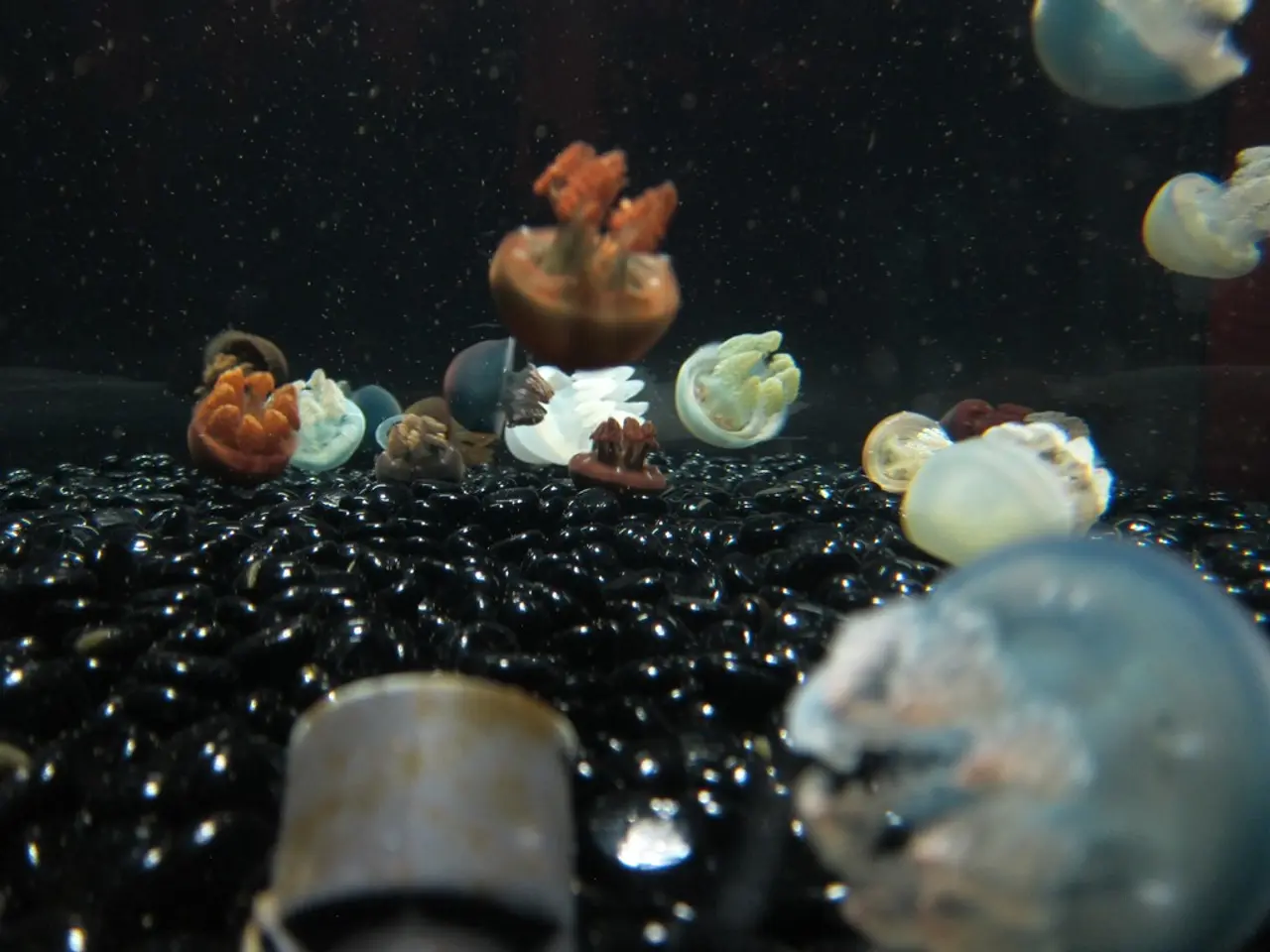Four individuals lost their lives in Florida due to flesh-eating bacteria discovered in the coastal seas
In the warmer months, Floridians and visitors alike are advised to be vigilant against a potentially deadly bacteria found in coastal waters and raw shellfish. Vibrio vulnificus, a type of flesh-eating bacteria, has resulted in four confirmed deaths in Florida this year, according to the Florida Health department.
To prevent infection, key prevention strategies include avoiding the consumption of raw oysters and raw shellfish, cooking shellfish thoroughly, and preventing cross-contamination. It is also crucial to eat shellfish promptly after cooking and refrigerate leftovers promptly to prevent bacterial growth.
Moreover, people are advised to avoid exposure of open wounds or broken skin to warm saltwater, brackish water, or raw shellfish harvested from such waters. Wearing protective gloves and clothing when handling raw shellfish or fishing can help minimize skin exposure.
Individuals with chronic illnesses, weakened immune systems, or liver disease should be especially cautious and possibly avoid activities involving contact with warm seawater and raw shellfish, as they are at higher risk of complications.
Vibrio vulnificus can enter open wounds when people are swimming in warm, brackish seawater, and it can also cause necrotizing fasciitis, a rare side effect where the flesh around an open wound dies. Mild infections can be managed by increasing fluid intake to prevent dehydration, but severe cases may require surgery to remove dead tissue.
Infections with Vibrio vulnificus can cause an illness called vibriosis, marked by symptoms like vomiting, diarrhea, and abdominal pain. If Vibrio vulnificus enters the bloodstream, it can cause severe illness with symptoms such as fever, chills, septic shock, and blistering skin lesions.
The Florida Health department urges those who suspect an infection to seek immediate medical attention, as early antibiotic treatment improves survival and can prevent severe outcomes like amputation. It is important to note that about half of the bloodstream infections caused by Vibrio vulnificus are fatal, and about one in five people with Vibrio vulnificus infection will die from the infection.
Vibrio vulnificus is part of a wider group of Vibrio bacteria found in coastal waters. To date, a total of 11 cases of Vibrio vulnificus have been reported in Florida this year.
In summary, the best prevention is to avoid raw shellfish, cook seafood well, protect wounds from seawater, and practice good food handling and hygiene around seafood. Those with underlying health conditions should take extra precautions to avoid exposure to this potentially deadly bacteria.
- Pursuing a healthy lifestyle includes being aware of chronic diseases, such as cancellous ones, and taking appropriate measures to avoid them, like steering clear of raw oysters and raw shellfish.
- In the realm of health and wellness, fitness and exercise, mental health, skin care, and therapies and treatments, nutrition plays a vital role, especially in the prevention and management of various health-related conditions.
- Recent findings suggest an increase in skin conditions, possibly linked to warm, brackish seawater, and raw shellfish, emphasizing the importance of observing proper skin care practices while engaging in coastal activities.
- Apart from Vibrio vulnificus, other Vibrio bacteria thrive in coastal waters and pose a threat to human health, underscoring the significance of maintaining good health, particularly during warmer months.
- When faced with potential foodborne illnesses like vibriosis, characterized by symptoms such as vomiting, diarrhea, and abdominal pain, prompt medical attention is crucial for the effective treatment and management of the condition.
- Emphasizing the importance of education and awareness, the Florida Health department encourages everyone, particularly those with pre-existing medical-conditions, to practice vigilance and adhere to necessary hygiene protocols in order to safeguard themselves from harmful bacteria like Vibrio vulnificus.




